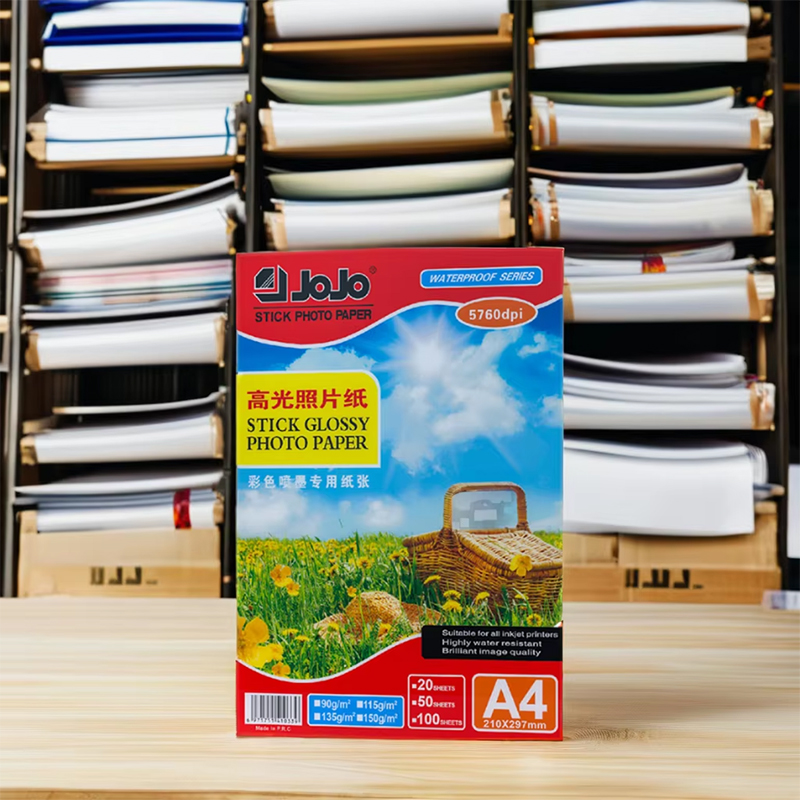If you need any help, please feel free to contact us
How To Transfer Designs With Jojo Photo Paper A4 Sublimation Papers?
People using Jojo Photo Paper and A4 Sublimation Papers often want to understand the correct way to transfer their designs so the final result shows vivid colors and accurate details. The JH-2003 Precise Smooth Surface Sublimation Transfer Paper is designed for such processes, but success depends on knowing how to handle each step. From printing to heat pressing, the way the paper is managed can determine the overall effect on fabrics, ceramics, and other coated surfaces.
Preparing the Digital Design
Before starting the transfer, it is important to prepare the image or text on design software. Colors should be adjusted to match the final material, as sublimation may slightly change tones depending on fabric or surface coatings. Reversing the design before printing is also necessary, especially for items like T-shirts, so that the image appears in the correct orientation once transferred. Using high-resolution files ensures details are not lost during the process.

Printing on the Transfer Paper
The JH-2003 transfer paper works smoothly with inkjet printers, provided sublimation inks are used instead of standard dye or pigment inks. Users should set their printer to match the paper type and select high-quality print mode for clear results.Feeding the paper correctly helps avoid jams and ensures even ink coverage. Because the paper is lightweight at 100g, it passes easily through printers without curling or wrinkling. Allowing the print to dry before moving to the next step prevents smudges and helps maintain clarity.
Positioning the Design on the Substrate
Once the design is printed, it needs to be carefully positioned on the chosen material, whether it is fabric, ceramic, or coated metal. Heat-resistant tape is often used to hold the paper in place, which prevents shifting during the transfer process. For garments, placing a protective sheet inside the fabric can stop ink from transferring through to the back side. Proper alignment at this stage is essential for a professional-looking final product.
Applying Heat and Pressure
Sublimation requires a combination of heat and pressure to transfer dyes from the paper onto the material. A heat press machine is commonly used for this purpose. The temperature and duration depend on the substrate—textiles often require around 180–200°C for 40–60 seconds, while ceramics may need different settings. The smooth surface of the JH-2003 ensures dyes are released evenly, reducing the risk of blotchy colors. Applying consistent pressure across the entire surface helps the transfer bond firmly and maintain sharp edges.
Cooling and Removing the Paper
After the pressing cycle, it is important to let the material cool slightly before removing the paper. Peeling too early can cause smearing or incomplete transfers. Once cooled, the paper can be carefully removed, revealing the design embedded into the surface. Because sublimation bonds the dye directly into the material rather than forming a layer on top, the print is durable and resistant to fading from washing or handling.
Troubleshooting Common Issues
Users sometimes face challenges such as faded prints, ghosting, or uneven transfers. These issues often come from incorrect temperature, insufficient pressure, or movement of the paper during pressing. Ensuring the design is printed on the correct side of the transfer paper also matters, as the coated surface is specifically prepared to hold sublimation ink. Testing with small items before moving on to larger projects helps identify the right settings for each material.
Practical Uses for Different Projects
This process can be applied to a wide range of projects. Personalized clothing such as sportswear, uniforms, and custom T-shirts benefit from sublimation’s durability. Ceramic mugs and plates become unique gifts with photographs or logos transferred onto them. Decorative panels and coated metal items can carry vibrant artwork for display. By following the steps carefully, both hobbyists and professionals can achieve consistent results with the JH-2003 paper, making it suitable for many creative and functional applications.
By understanding the correct preparation, printing, alignment, and heat pressing methods, users can effectively transfer designs with Jojo Photo Paper and A4 Sublimation Papers. The JH-2003 Precise Smooth Surface Sublimation Transfer Paper supports this process with its smooth finish, lightweight design, and compatibility with sublimation inks, helping ensure that final projects appear sharp and colorful across different materials.

 English
English Español
Español 中文简体
中文简体 Português
Português

